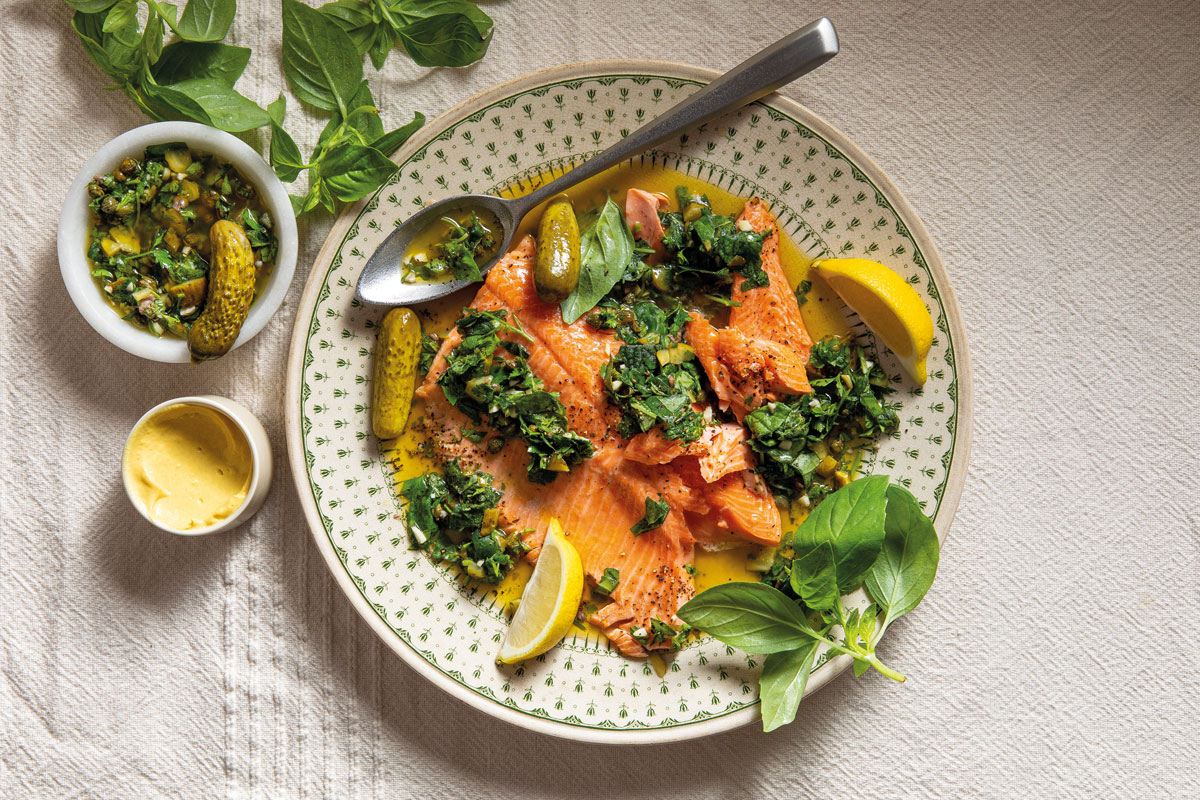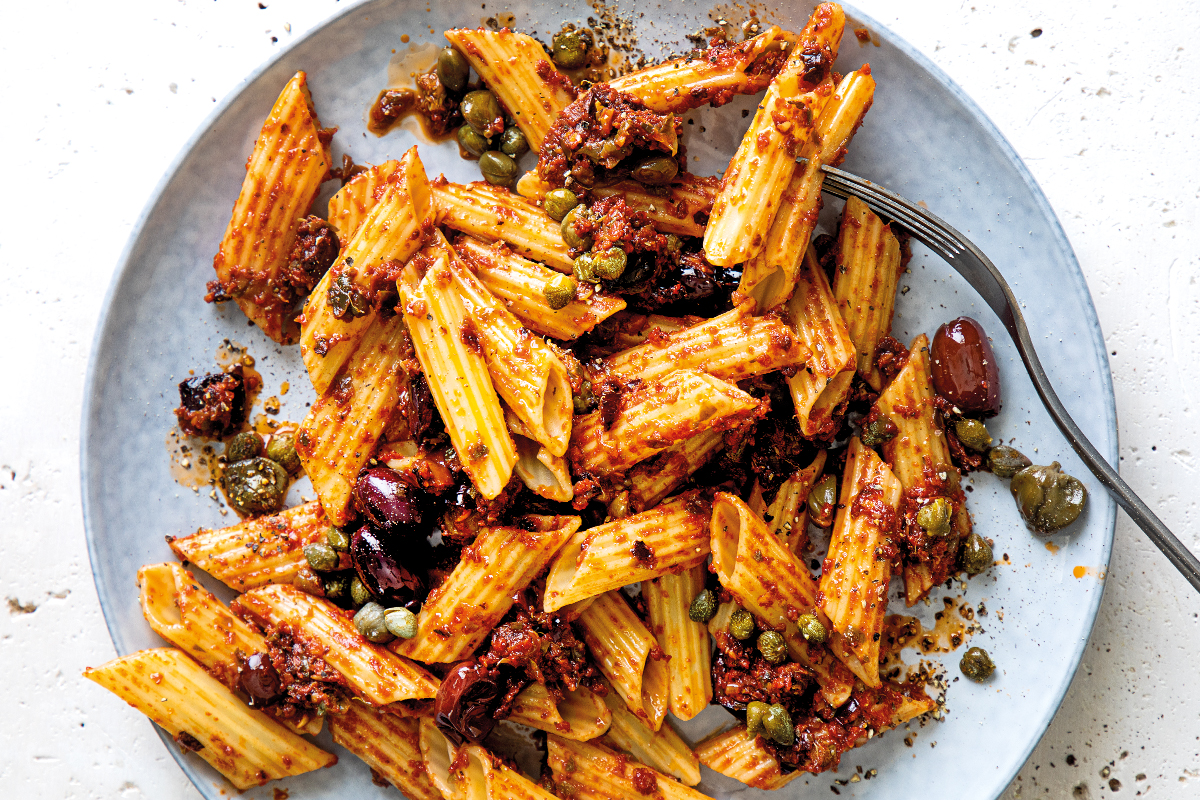Mad capers: This sauce is the best way to enjoy capers
A classic Italian green sauce – versatile enough to serve with veg, fish or chicken – is the best way to enjoy salty, acidic capers, says Sam Woulidge
“Iread somewhere,” my ma began, “that to look elegant and classic you
should wear no more than 12 items of clothing. And that includes accessories,” she added, pointedly looking at the 15 silver bangles I never took off my right arm. My mother liked a pared-down look. And because of this, I did not. “Less is more,” she would admonish as I piled on the earrings, the crystals, the baubles and the bangles.
ALSO READ: Bowl in one: this bean-and-chorizo stew has everything I love about food
The only thing we agreed on in terms of fashion was the beauty of black. Marie liked a single strand of pearls. I like many. Marie taught me about Hermès scarves and Burberry trenches. I appreciate both but love neither. In terms of style, my mom and I could not have been more different. But I am grateful for everything she taught me; thanks to her, the things she learned
as an adult, I learned as a young girl. She taught me everything she had always wanted to know. And while our personal styles were vastly different, our taste in food and travel was a shared joy.

Find the recipe for salsa verde here.
Among the many things my mother introduced me to were her three exotic loves: heart of palm, artichokes and capers – flavours a world away from where she grew up and pretty alien to my own suburban childhood. Heart of palm would be diced into an avocado-laden salad or eaten straight from the imported tin, artichokes or carciofi (the Italian name sounds so much more fun), marinated in a good olive oil, would be spooned from the glass jar into small bowls as a pre-dinner snack, and capers would be sprinkled over my dad’s smoked salmon.
ALSO READ: Why I love to make generous platters
The heart of palm and the carciofi were always served generously but in the case of capers, my ma was right: less is more. Hold back. These tiny, salty, floral flavour bomb buds are laboriously harvested from the caper bush, Capparis spinosa, in the hot Mediterranean climes of Italy. The plants are not averse to hardship and even thrive in times of drought. They deserve respect They are meant to be used with restraint. Or as Marie would have said, “Bietjies bietjies maar baie grênd” (“A little bit, little bit, but very grand”).

I think we both really discovered proper capers on our mother-daughter trip to Venice that year we braved the crowds and the cold to attend the Carnivale in February. There, a beautiful, warm-you-to- your-bones spaghetti alla puttanesca – a tomato, olive, anchovy, chilli, garlic and caper dish so salacious in its history and so delicious in its entirety – absolutely convinced me of the magic of these particular buds. Until then I had only really known the local substitute capers made from the firm seeds of orange nasturtium flowers. And while they weren’t the real Italian deal, I loved their taste and the fact that I was eating a part of a flower – a more grown-up version of the knikkertjies or froetangs, the seed capsules of the Romulea rosea wildflowers that we children would forage for in open fields and on the school playground.
ALSO READ: How chicken and rice reminds me to always try new things
You see, another thing my ma taught me, something she was adamant about, was that you should never forget where you came from. “Know your roots,”
is what she always said. And if the exotic Italian capers remind you of the humble knikkertjies of your South African childhood, then that is a beautiful thing


Comments